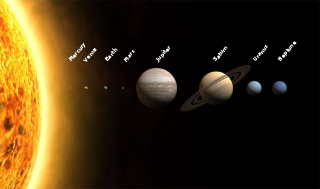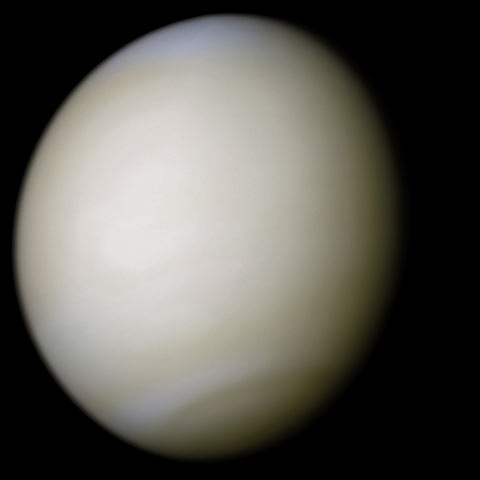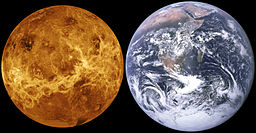Solar System
Introduction to Solar System
We live on the earth. Earth is a planet and revolves around sun. There are total eight planets. These eight planets are Mercury, Venus, Earth, Mars, Jupiter, Saturn, Uranus and Neptune. All planets revolve round the sun. Earth is one of them. The sun and eight planets make a large family in space. This family of sun along with sun and planets is called SOLAR SYSTEM.
Planets, sun and all other starts, etc. are known as celestial bodies.

The branch of science which studies about stars and planets is called astronomy.
Astronomy is the combination of two words, i.e. Astron + nomous = Astronomy. Astron and nomous both words came from Greek. Astron means star and nomous means law or culture. Thus combination of both words, i.e. Astronomy means law of stars or culture of stars.
The scientists who study about stars and planets are called astronomers.
Sun
The sun is the biggest star of the solar system. Sun is the central part of the solar system. Sun is the star closest to the earth. Sun is about 109 times bigger than our earth. The diameter of sun is 109 times that of earth.

Distance of Sun to Earth
The distance from sun to earth is about 1.5 million kilometers. Light travels with a speed of 29,97,92,458 meter per second. This means light travels 29,97,92,458 meter in one second or about 299792.5 kilometer in one second. With such a mega speed, light takes 8 minute 20 second to reach from sun to earth. Now it can be just imagined that how much time we have to take to reach from earth to sun. In fact no machine has been made so far using which we can reach to the sun. Sun is just mystery for us.
Sun: Ultimate Source of Energy
The temperature at the centre of the sun is about 15 billion degree Centigrade. Water boils at 100 degree centigrade. After knowing the heat of boiling water, you can just imagine the heat present in the sun.
Sun is like a ball of fire. It is a huge sphere of very hot gases. The sun is made of mainly hydrogen and helium gas. The helium release energy, this energy called solar energy. The earth receives almost all of its energy from the sun consequently we receive all of required energy from sun. Earth receives energy in the form of sun light. We feel discomfort when sun does not shine with its full bloom due to dense clouds in rainy season. In cold season we feel discomfort also when does not receive more sun shine. Making a correlation between some of these situations you can think about the importance of sun.
Thus, Sun is the ultimate source of energy for earth and for us.
Sun: Ultimate Source of Food
Green plants make their food themselves. Plants make their food in the presence of sunlight. We eat plants or food comes from plants source and flesh of plant eating animals or products come from animal source. Thus, we all living beings depend upon plant i.e. food made by plants. And to make food by plants sunlight is must. Thus, we can say that sun is the ultimate source of food.
Planets
There are eight planets in our solar system. All these planets are at different distance from the sun. The planets of the solar system, in increasing order of their distances from the sun are - Mercury, Venus, Earth, Mars, Jupiter, Saturn, Uranus and Neptune. Among these there are four terrestrial planets.
Planets primarily composed of rocks are called terrestrial planets. Mercury, Venus, Earth and Mars are called terrestrial planets. Terrestrial planets are called telluric or rocky planets also.
Mercury

Mercury is the closest planet to the sun. Mercury is smallest planet in the solar system. It is almost half the size of earth. There is no water and air on the mercury. Mercury completes one revolution round the sun in about 88 earth days. This means, if we count the number of days in a year on Mercury, then it will come to 88 earth days. But from earth it appears to complete its revolution round the sun in 116 days. Speed of Mercury is fastest in our solar system. Mercury got its name after Roman deity Mercury.

So far two satellites launched from earth visited Mercury. Name of these satellites are Mariner 10 and MESSENGER.
Mercury: Important Facts
Size: Mercury is 1/3 of the size of earth. This means 3 mercury = 1 earth.
Days: 176 earth days is equal to 1 days on Mercury
Years: 88 earth days is equal to 1 year on Mercury
Moon: Mercury has no moon
Temperature: Mercury is six times hotter than hottest place on earth in day time and in night more than twice as cold as coldest place on earth.
Distance: 58 million km from sun.
Mission Mercury: MESSENGER was the first aircraft to orbit Mercury. Mariner 10 was the first aircraft to visit Mercury.
Source: solarsystem.nasa.gov/planets/mercury
Venus
Venus is the second planet from the sun. The structure of Venus is similar to the earth. Venus is the brightest planet in our solar system. Venus is the hottest planet even though Mercury is closer to the sun. Venus is the brightest object appears in night sky after moon.

Venus is called Earth’s sister or ‘twin’ planet because of its similarity in size, mass and proximity to the sun. Venus has rocky body like earth. Venus is also known as Morning Start and Evening Start, because Venus is visible just after sun set and visible brightest few hours before sun rise.
Diameter of Venus is 12092 km just 650 km less than earth and its mass is 81.5% of earth i.e. just 18.5% less than earth. Venus completes one revolution to the sun in about 225 earth days (224.7 days). Venus completes one rotation (rotation on its axis) in 243 earth days. Venus has longest rotation period than any planet in our solar system. This means one days and one night on Venus is equal to 243 days on earth.
Venus spins (rotates) backwards on its axis. This means sun rises in the west and sun sets at the east on Venus.
Venus got its name after the Roman Goddess of Love and Beauty.
Venus: Important Facts
Size: Venus is 81.5% of the size of earth

Years: 225 days on earth is equal to 1 year on Venus
Days: 117 earth days is equal to one day and night on Venus.
Moon: Venus has no moon
Temperature: Venus is the hottest planet. Venus is about eight times hotter than hottest place on earth.
Distance: 108 million km from sun.
Mountain: Tallest Mountain on Venus is 11km in height. This is higher than Mount Everest.
Mission Venus: Mariner 2 was the first successful mission to another planet by any country in 1962 by the country of USA. So far 41 missions sent to Venus.
Source: solarsystem.nasa.gov/planets/venus